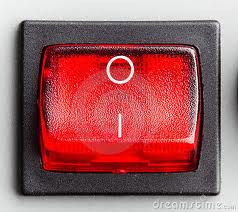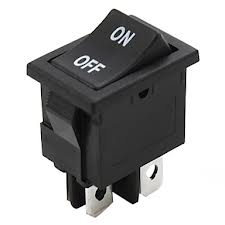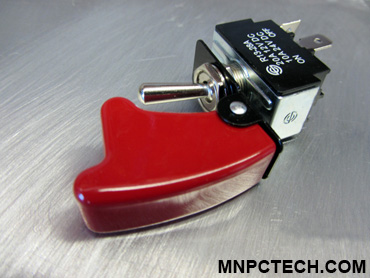I live in the UK and so am used to UK design conventions. Many UK households have at least one XOR configuration lighting circuits for the communal areas - two switches leading to the scenario where, depending which is used, both can be in the traditional 'off' position. I'd say that it's therefore not really a big mental challenge to have a mixture of switch configurations, although it can be mildly frustrating at times.
Single-position lighting circuit wall switches — and BS 1363 wall sockets — use a downward motion to make the circuit live. This means that, for power sockets, a visible red indicator on the top-facing side of the socket's switch shows the socket is live at all times. (It's not called the "world's safest mains plug and socket" standard for no reason.) Some sockets and extension cables also have illuminated indicators either built into the switch or on the socket for further guidance.
All UK wall switches have a pretty stiff movement allowing you to 'feel' the position of the switch with a moderate amount of pressure without actually triggering it - whereas some much larger European 'panel' switches can be switched with little more than an unintended arm contact when walking by.
Always-vertically mounted RCDs use the standardised up=live, down=neutral paradigm for a few obvious reasons including failing safe and ease of visibility. The context of their usage is fundamentally different from domestic sockets so this is fine by me.
Example: in daily life, I use IKEA standing lamps which use the European up=live, down=neutral (and are gently annoying for this reason) and audio equipment which uses horizontally mounted switches. Each one is different, probably because of their countries of origin. Some other lamps have a switch which passes through the actual neck of the lamp, so you can put two fingers either side and just push in the appropriate direction. As you can rotate the lamp however you like it this solves the problem ;-) Or you can just fit clappers everywhere!
I don't consider French sockets to always follow the up=live, down=neutral paradigm; I think this depends to an extent on the electrician and of course whether they're to control an XOR circuit.
If I was designing a physical product and had the opportunity to be this obsessive over the minutiae (such as which way a switch tilts when it's engaged), electrical safety standards providing I would see about offering a modular switch - for example, protected by a screw-in plate and not easily modifiable without a screwdriver - which allowed the user to modify the switch's operation to his preference.
As it's tangentially related: for any software design, I always recommend eschewing a skeueomorphic pseudorealistic convention and always prefer when there's a nice plain square button, clearly labelled Off or On in the appropriate i18n locale. That, and perhaps colour the switch as red when off and green/blue when on. Although those colour codes aren't universally used they're arguably instantly recognisable given widespread use.
...And now, ignoring everything I've said above: if I had the ultimate choice, I'd say mount your switch so the top-facing half is flush to the shell when the device is powered on (requiring an upward flick to power on) — and cover with a small, clear, hinged door to prevent accidental disabling. Nothing worse than fumbling blind around the rear of a unit only to accidentally power it off.
















